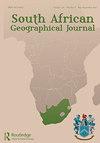对津巴布韦自然旅游的气候适宜性进行量化
IF 1.1
4区 社会学
Q3 GEOGRAPHY
引用次数: 7
摘要
气候和天气是旅游的重要资源。对于以自然为基础的旅游,天气决定了活动的时间和种类,而长期气候影响游客到达的季节性和游客将体验到的自然环境。这种影响在发展中国家更为突出,在这些国家,几乎没有采取任何适应措施来改善不利的气候和极端天气事件。旅游气候指数(TCI)被广泛用于量化旅游目的地的气候适宜性。对南非、莱索托和纳米比亚的初步研究表明,尽管在数据可得性和质量方面存在挑战,但该指数在非洲的情况下是适用的。这项研究首次提出了津巴布韦的TCI计算,津巴布韦是一个依靠户外自然旅游吸引游客和外国收入的国家。1989年至2014年期间,津巴布韦的TCI平均年度得分将其划分为非常好到优秀的气候适宜性,得分范围为75.5-83(最高100分)。月度TCI得分将低地地区的四个地点分为冬季高峰适宜性;其余的站点要么是夏季高峰,要么是双峰肩峰。这揭示了全年气候对津巴布韦旅游业的适应性,并强调了了解每个目的地的季节性变化以最大限度地提高游客满意度的重要性。本文章由计算机程序翻译,如有差异,请以英文原文为准。
Towards quantifying climate suitability for Zimbabwean nature-based tourism
ABSTRACT Climate and weather are key resources for tourism. For nature-based tourism, weather determines the timing and variety of activities, while longer-term climate affects the seasonality of both tourism arrivals and the natural environment tourists will experience. This influence is heightened in developing countries, where little adaptation has been implemented to ameliorate unfavourable climate and extreme weather events. The Tourism Climatic Index (TCI) is widely used in the global North to quantify the climate suitability of tourist destinations. Initial studies for South Africa, Lesotho and Namibia reveal the applicability of the index in the African context, despite challenges in data availability and quality. This study presents the first TCI calculations for Zimbabwe, a country relient on outdoor nature-based tourism for attracting tourists and foreign income. The mean annual TCI scores classify Zimbabwe as very good to excellent in climatic suitability for tourism, with scores spanning 75.5–83 (of a maximum 100) for the period 1989–2014. Monthly TCI scores categorize four locations in the Lowveld region as having a winter-peak suitability; the remaining stations have either summer-peak or bimodal shoulder-peaks. This reveals year-round climatic suitability for tourism in Zimbabwe, and highlights the importance of understanding seasonal variability per destination to maximize tourist satisfaction.
求助全文
通过发布文献求助,成功后即可免费获取论文全文。
去求助
来源期刊

South African Geographical Journal
GEOGRAPHY-
CiteScore
3.40
自引率
7.10%
发文量
25
期刊介绍:
The South African Geographical Journal was founded in 1917 and is the flagship journal of the Society of South African Geographers. The journal aims at using southern Africa as a region from, and through, which to communicate geographic knowledge and to engage with issues and themes relevant to the discipline. The journal is a forum for papers of a high academic quality and welcomes papers dealing with philosophical and methodological issues and topics of an international scope that are significant for the region and the African continent, including: Climate change Environmental studies Development Governance and policy Physical and urban Geography Human Geography Sustainability Tourism GIS and remote sensing
 求助内容:
求助内容: 应助结果提醒方式:
应助结果提醒方式:


